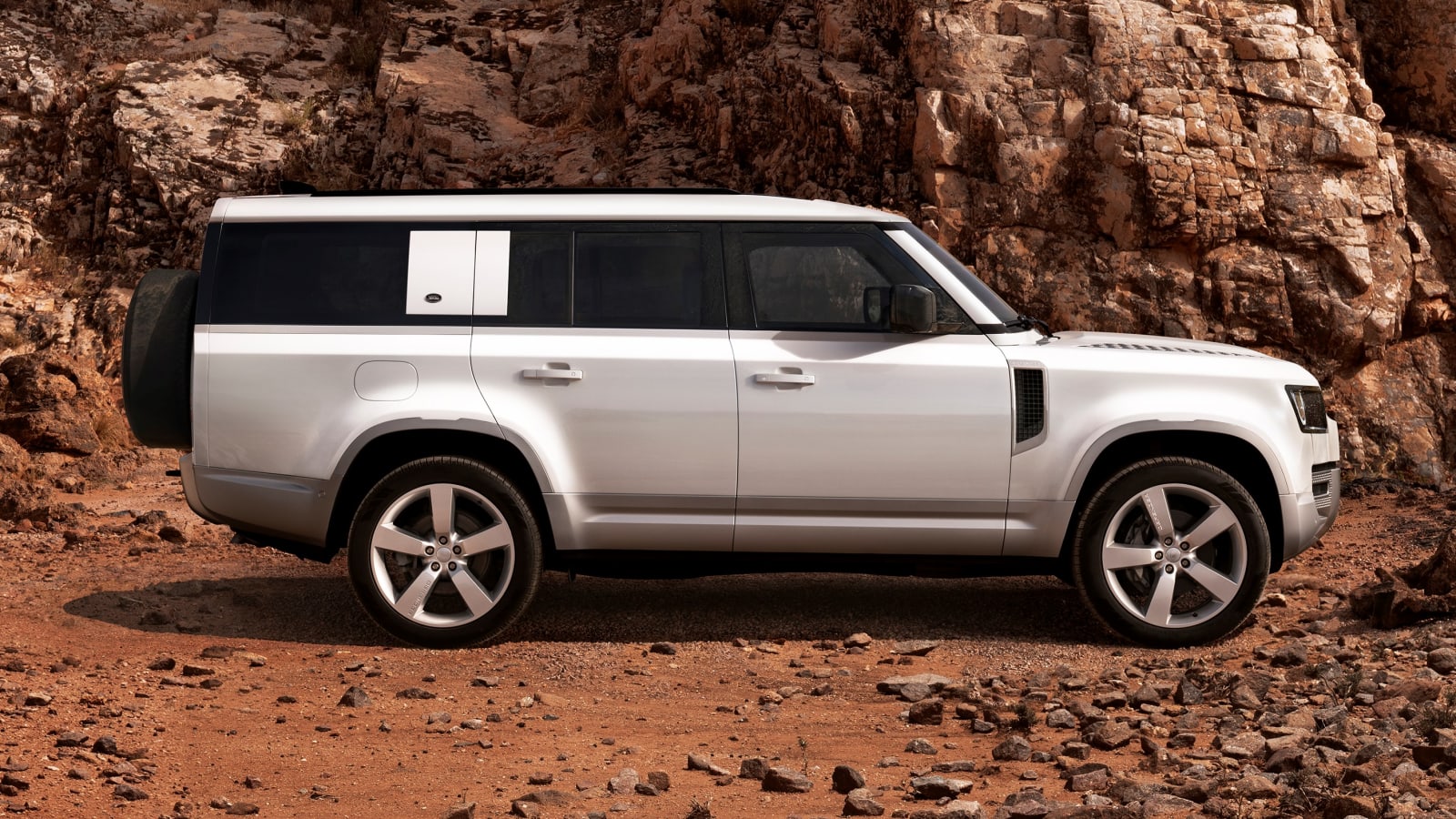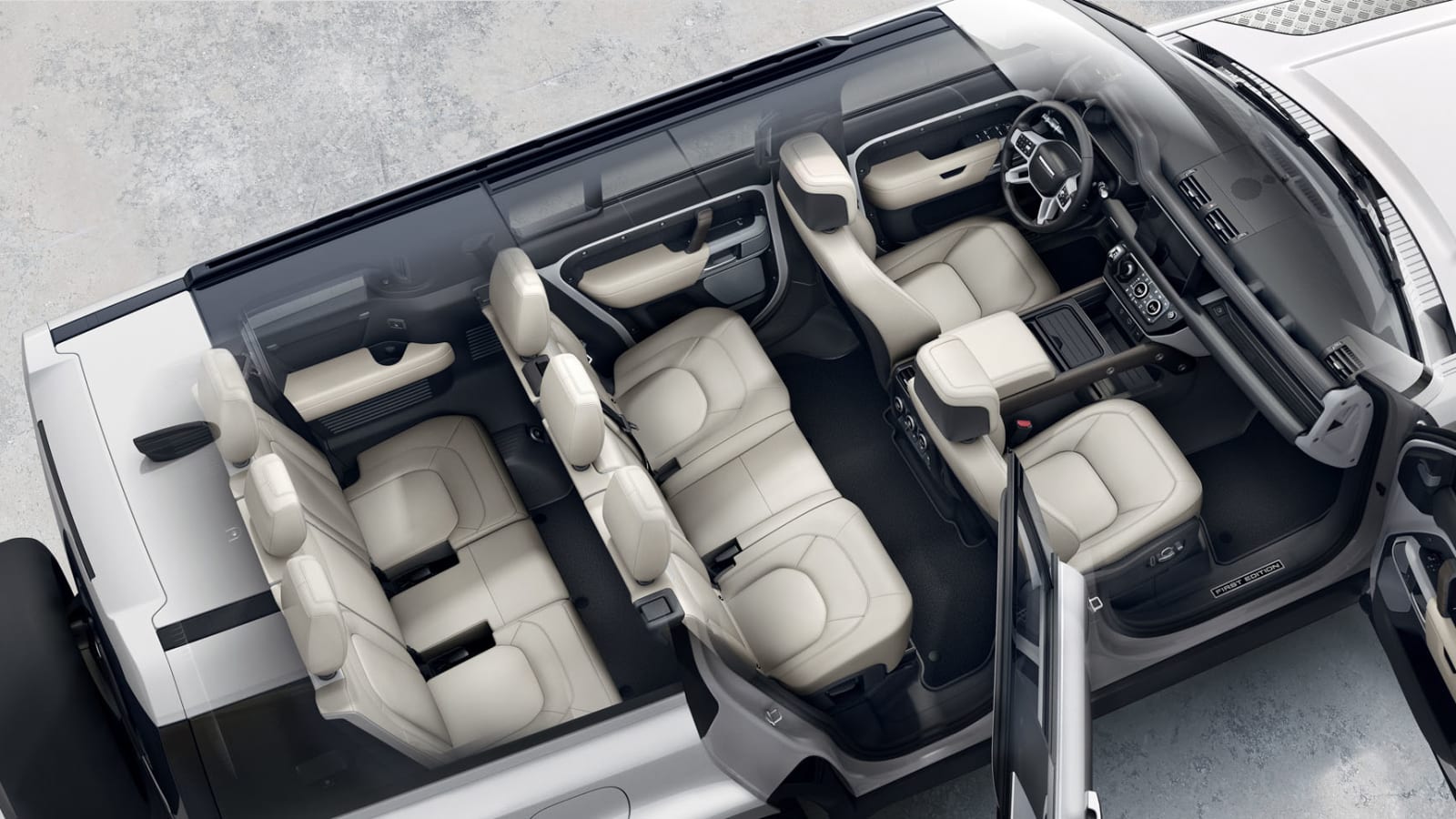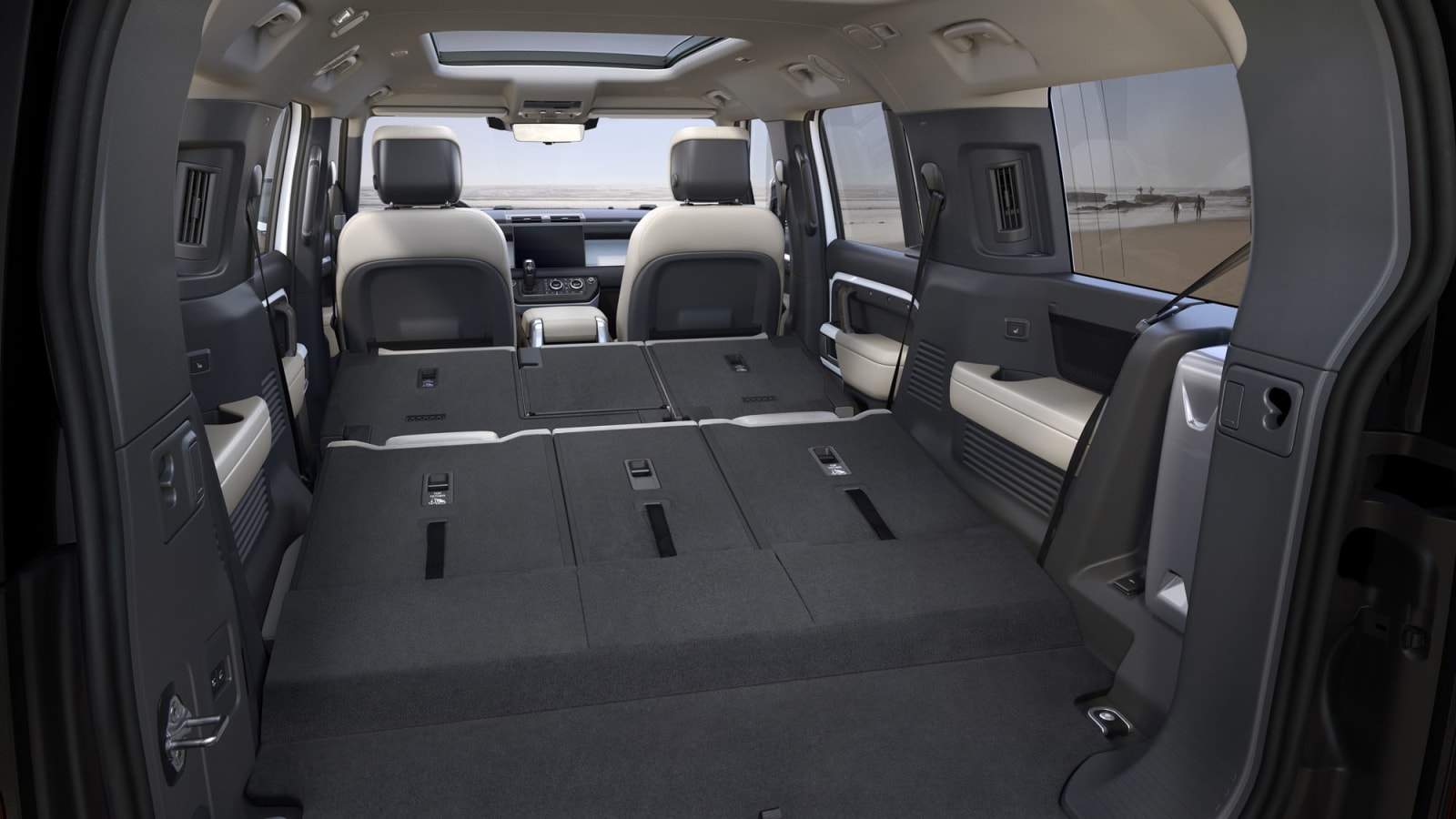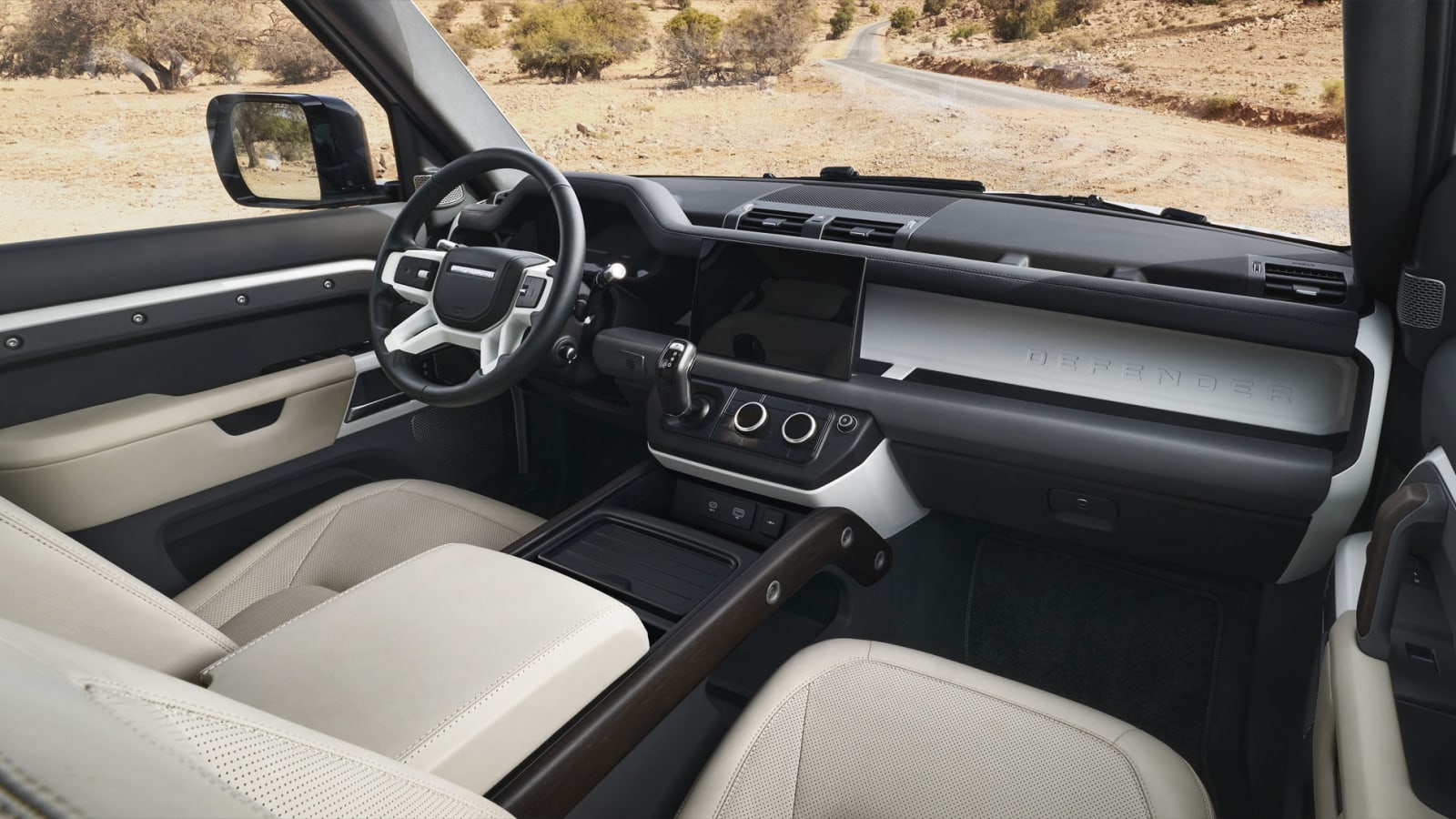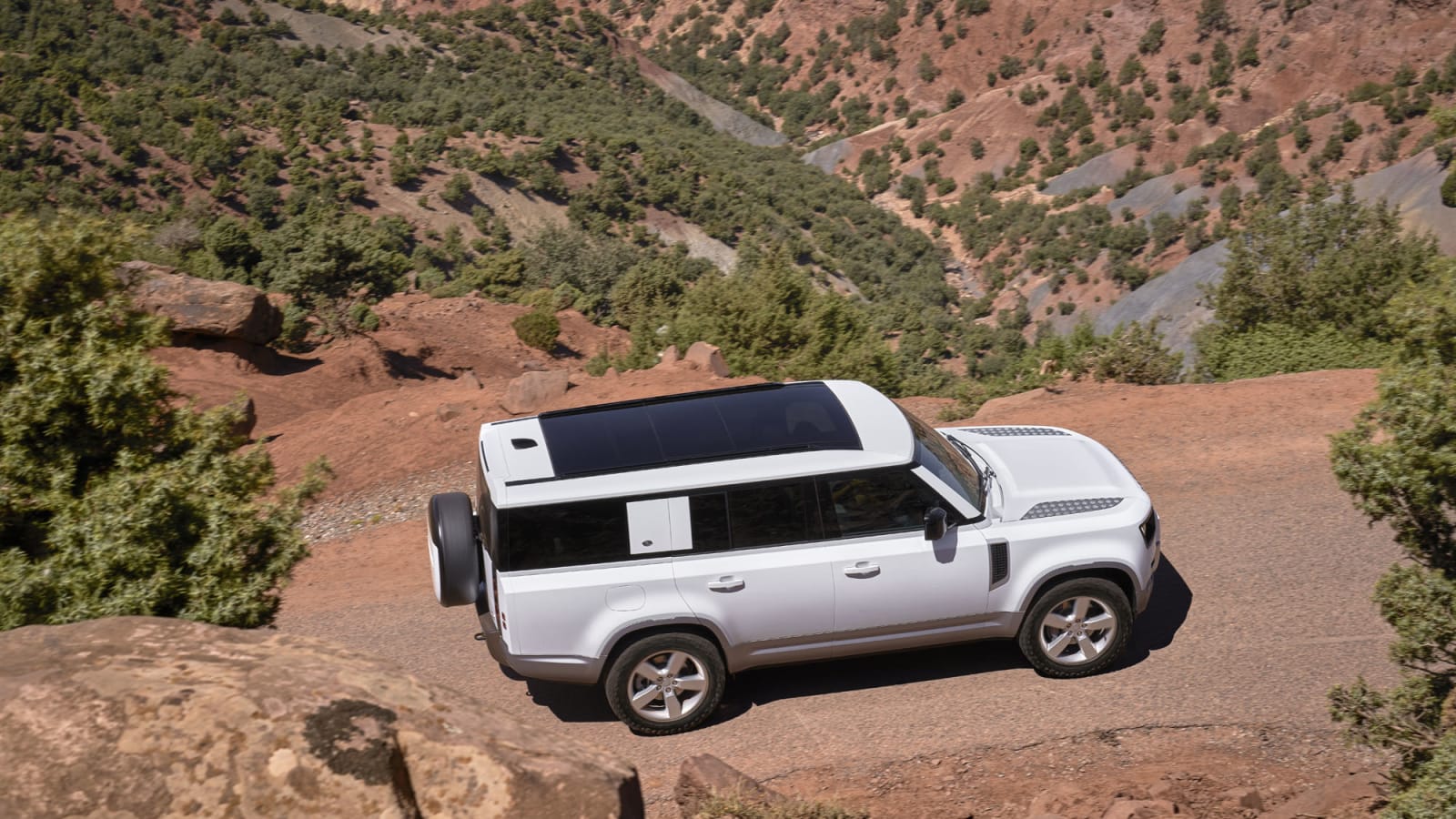The modern Land Rover Defender doesn’t have a shortage of seats. You can get a third row in the 110 and a front bench seat in the 90, making it possible for six to seven people to come along on whatever adventure you had cooked up. Of course, “coming along” is not the same as “being comfortable.” For that, you’ll need the new 2023 Land Rover Defender 130.
The 130 is virtually identical to the 110 from the front bumper to the back doors. Even the wheelbase is the same. The difference is the extra 13.5 inches tacked onto the back end, much of that hanging over the rear wheels. If you’re thinking that’ll substantially reduce the departure angle, you’d be right. Comparing the 130 to an air-suspension-equipped 110 (the 130 only comes with air suspension), the 110 has a 37.7-degree departure angle at on-road height and 40 degrees at the off-road setting. Meanwhile, the 130 has a 24.5-degree departure angle at the on-road height and 28.5 degrees when raised. So, if you’re going to be off-roading your 130, you will need to be careful not to drag the tail. At least the approach and breakover angles stay the same, as do the ground clearances of 8.5 and 11.5 inches depending on suspension mode.
The extra length also changes the Defender’s look, and not for the better as far as most of the Autoblog staff is concerned. After spending a week with it, however, I came to rather like the look and find that the 110 almost looks stubby in comparison. At the very least, it definitely looks better in person, so before writing it off entirely, make sure you check one out in real life.
Besides the obvious extra length, one notable exterior change is the lack of the rear safari windows. Instead, the 130 gets a traditional sunroof. It’s definitely not as distinctive as the safari windows on the short Defenders, but it does let in more light (or less if you close the shade), which helps the rear-most seats feel airier and more spacious.
And on the topic of room, the 130 has lots of it, at least for passengers. At about 5-foot-11, and a little under 300 pounds, yours truly can sit pretty comfortably in the third row. There’s plenty of headroom and even legroom. It doesn’t require the second-row occupants to sacrifice much, if at all. So, the promise of a Defender with actually usable extra seats is satisfied. That doesn’t make it a minivan, though. The third-row seat is a tad firm, a bit close to the floor and good luck fitting three across despite having the seatbelts for it. Access is also a little tricky since the rear doors aren’t any larger and the second row simply slides forward without any seat-bottom tricks to provide a wider pass-through.
The situation is similar with cargo space. All that extra length does result in considerably more space than the Defender 110 and just a bit more than the other Land Rover three-row SUV, the Discovery, but volumes aren’t as enormous as you might expect when compared to the segment as a whole. Space with all seats up is the best illustration of this: The 130 provides 15.3 cubic feet of space, which is a useful improvement over the three-row 110’s nearly useless 10.7, but still one of the smaller amounts for a three-row SUV. Behind the second row, the 130 expands its lead with 43.5 cubes to the three-row 110’s 34.6. Flatten the second row and the 130 maxes out at 80.9 cubic feet versus the 110’s 69. Some of the 130’s cargo-hauling capability is slightly hampered by the hump formed by the folded third row. Keep in mind, though, that the Defender’s boxy shape should make it more useful than its numbers suggest when comparing it to other large, more rounded SUVs.
Everything else inside is shared with the 110. There’s the same charming combination of utilitarian features and materials such as shelves and grippy buttons, with splashes of luxury such as natural-finish wood trim and sleek infotainment graphics. Forward visibility is great, but rear visibility is less so as full-size headrests for every seating position fill up the rearview mirror.
As for the driving experience, well, there isn’t much different compared to the smaller Defenders. The 130 comes standard with air suspension, which offers adjustable ride height either for improved off-roading or easier access when parked. It’s tuned a bit soft but is well controlled. Cornering is not the Defender’s strong suit with a decent bit of roll, but it’s a damn sight better than a G-Wagen or Wrangler. And the steering is surprisingly accurate, even if slow and light in effort. It’s clearly tuned to make it easier to navigate tight wooded trails, or equally tight parking lots.
While the other Defenders offer four- and eight-cylinder engines, the Defender 130 is only available with turbocharged, mild-hybrid 3.0-liter six-cylinder engines, one of which is exclusive to the model. That would be the base, low-output inline-six (dubbed P300), which makes 296 horsepower and 347 pound-feet of torque. Our test vehicle, though, was equipped with the P400 high-output mild-hybrid inline-six making 395 horsepower and 406 pound-feet of torque.
Even without having experienced the low-output engine, we’re confident in recommending the high-output engine if your budget allows. It’s impressively smooth and quiet, and it moves the Defender effortlessly. The automatic is a solid match, shifting smoothly and quickly enough, and full-time four-wheel-drive is handy in nasty weather. The low-output engine is likely similarly smooth (and has the same driveline), but it has no advantages compared to the high-output one. It’s down on power, and it has the same fuel-economy rating at 17 mpg city, 21 highway and 19 combined. It does still have the 8,200-pound tow rating, but again, you can have all that plus an extra hundred horsepower and pound-feet of torque for just a bit more up front.
The 130’s extra space does come with a major price increase. The cheapest version available is the S trim at $69,475. If you want the high-output six, it’s another $10,300 to move up to the SE, which does net you some additional features such as different headlights, a sunroof and 20-inch wheels. For comparison, you can get a Defender 110 for as little as $54,975, or $59,775 for a comparable 110 S. So, you really have to ask yourself if that extra space is worth an extra $10,000?
The Defender 130 ultimately fills a very specific niche: a luxury three-row SUV that can go off-roading, but, unlike Land Rover’s current Discovery, with the boxy, rugged, go-anywhere look that is all the rage nowadays. It’s really the only game in town, but because of its smart passenger packaging and great base driving experience, at least it’s a good one.


